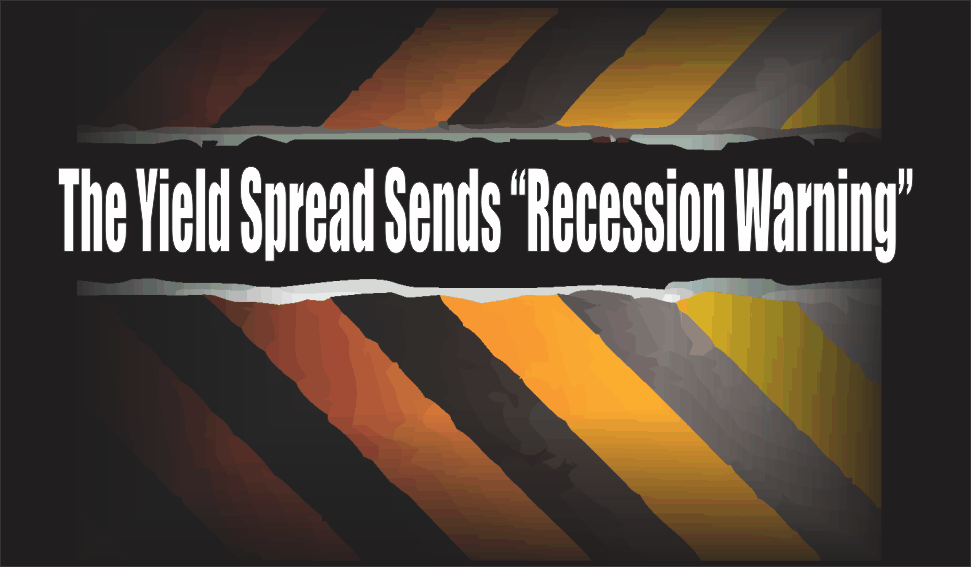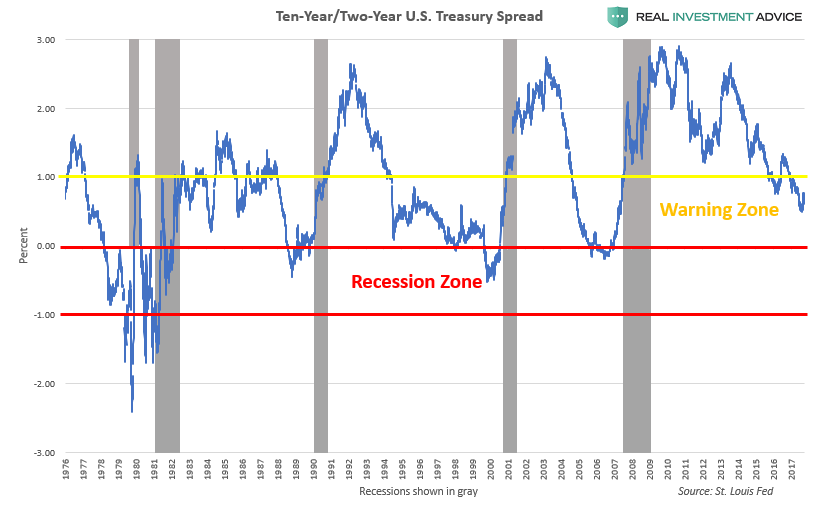
A few weeks ago, I wrote a piece in which I estimated when the next U.S. recession and bear market would start based upon where we were in the current yield curve cycle and comparing it to the prior six economic cycles. According to that admittedly simple exercise (it wasn’t a hard prediction, but just an estimate based on history), the next stock market peak would occur in September 2019 and the recession would start in February 2020.
In today’s piece, I wanted to discuss in further detail an important chart that I included in my “When Is The Next Recession And Bear Market” piece: the 10-Year/2-Year U.S. Treasury yield spread. I’ll start with a brief refresher: in a normal market, and assuming that the bonds are of the same credit rating, longer-term bond yields are higher than short-term bond yields to compensate investors for the greater risk of holding during a longer period of time (default and inflation risk).
A steep or “normal” yield curve is typically seen early on in the economic cycle and lasts for the majority of the cycle and can be thought of as a “green light” for investors. As the economic cycle matures, the yield curve takes on a flat shape. A flat yield curve can be thought of as a “yellow light” for investors. In the very final stages of an economic cycle, the yield curve often inverts as the Fed’s aggressive rate hikes causes short-term interest rates to actually rise above longer-term interest rates. An inverted yield curve can be thought of as a “red light” for investors.
The 10-Year/2-Year U.S. Treasury bond spread is a very simple, yet powerful, way of visualizing the U.S. Treasury yield curve. To create this chart, the current two-year Treasury note yield is subtracted from the current ten-year Treasury note yield and plotted over time. When the spread is over 100 basis points or 1 percent, it is consider to be a normal or steep yield curve. When the spread is between 0 percent and 1 percent, it is equivalent to a flat yield curve, which is the “recession warning zone” because it signifies that the economic cycle is becoming long in the tooth and that a recession is likely to occur within a few years. When the spread goes under 0 percent into negative territory, that’s when the yield curve is inverted, which implies that a recession is imminent. According to the 10-Year/2-Year U.S. Treasury bond spread, we are currently in the “recession warning zone,” but not the “recession zone” just yet.

The yield curve inverted before every U.S. recession in the past half-century, which is why it is worth paying close attention to (on the chart above, the gray zones show when historic recessions have occurred). In recent years, many bullish market commentators have promoted theories supposedly explaining why inverted yield curves are obsolete as a recession predictor, why “this time is different,” and so on, but a brand new San Francisco Fed paper confirmed that the yield curve is still the most accurate predictor of U.S. recessions.
Why do inverted yield curves predict economic recessions? The main reason is because banks borrow at lower, short-term interest rates and lend money out at higher, longer-term interest rates, and the differential or “spread” between the two rates is where they earn their profit. In addition, yield curve inversions typically occur after several years of interest rate hikes, which have a dampening effect on the economy and financial markets. As fund manager Jeffrey Gundlach has said, the Fed has usually raised interest rates “until something breaks.” My major concern is that it will be the extremely dangerous “Everything Bubble” that breaks this time around.
Please follow or add me on Twitter, Facebook, and LinkedIn to stay informed about the most important trading and bubble news as well as my related commentary.
Jesse Colombo
Jesse is an economic analyst and Forbes columnist who was recognized by the London Times for warning about the U.S. housing and credit bubble as a university student. Jesse continues to warn about dangerous post-2009 economic bubbles and has over 100,000 social media followers. Jesse graduated with a Bachelor of Science (cum laude) from Stony Brook University.
Views: